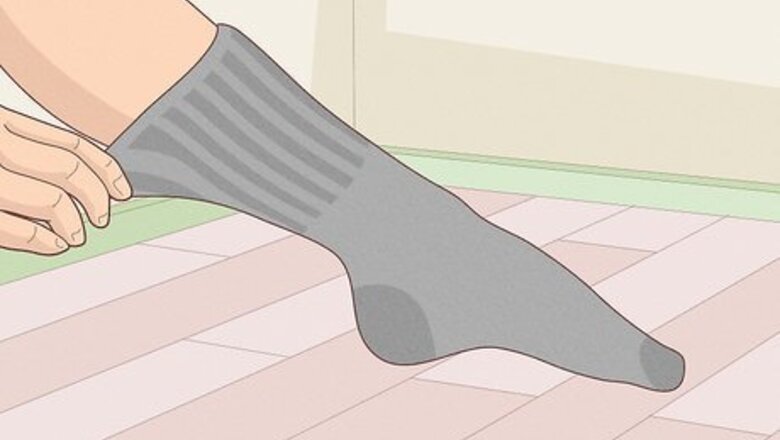
views
Wearing Them In
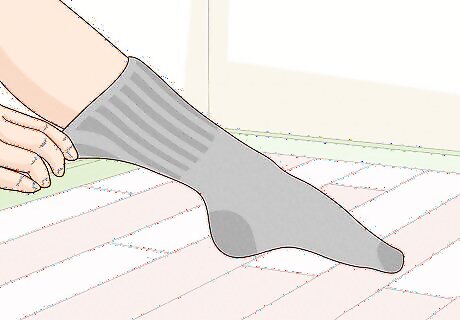
Start with thick socks. Put on socks that will both push the leather outwards and protect your feet from any rubbing or pinching. This will prevent the formation of irritating blisters.
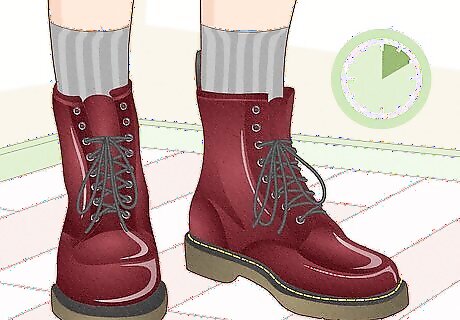
Wear the shoes for 10 minutes. Keep the shoes on long enough that they begin to mold to your feet, but not so long that they cause pain or injury. Walk around and stretch your feet while your wear them. Do this whenever you have free time to change shoes and walk around. Try to do this at least two to three times per day. To find the time to switch between your comfy shoes and the Dr. Martens you’re breaking in, wear your new boots before, after, or during the lunch break of your work day.
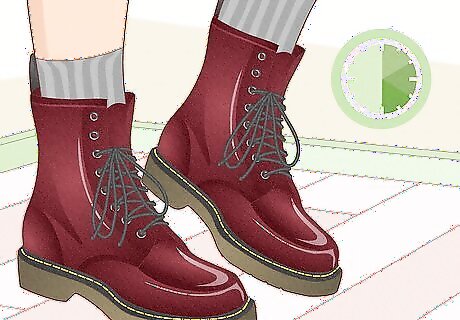
Increase your shoe-wearing time in ten-minute increments. Slowly expand the amount of time you keep your shoes on your feet, paying close attention to how your feet feel. Don’t push through the pain; take them off if you start to feel any discomfort. Because this is a slower and more time-consuming method, plan ahead. If you want to show off your new Dr. Martens at a particular event, begin this process about a month before that date. Try to wear your Dr. Martens around the house as much as you can (without causing yourself pain).
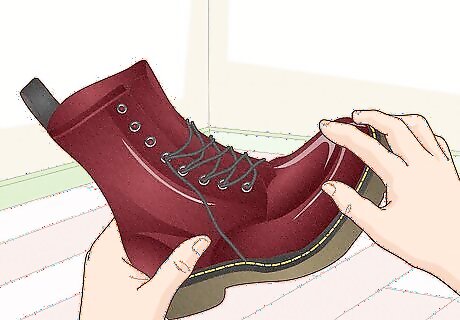
Manually stretch the leather. Bending the leather in the direction it goes in when you're wearing your boots can help break them in. Bend the back of the shoe inwards to make the heel area more spacious, then push the toe to and away from the laces. You can also bend the leather in and out on the instep (or the middle, by the laces) of the shoe. This may cause creasing in the leather. To avoid noticeable or permanent creases, be sure your leather is properly conditioned before you use your hands to stretch it. Dr. Martens' has its own product, Wonder Balsam, for this purpose, however, other brands should work just fine as well. Periodically conditioning your boots will also aid in the overall break-in process. Soft and supple leather is much easier to stretch than stiff leather.
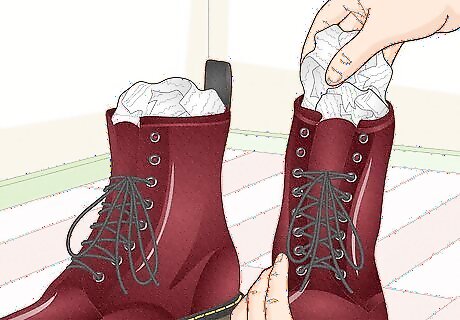
Keep the shoes stretched even when they’re off your feet. Stuff your shoes with some newspaper or a shoe tree to make sure they don’t shrink back down when you’re not wearing them. If you use newspaper, be sure to fully stuff the shoe.
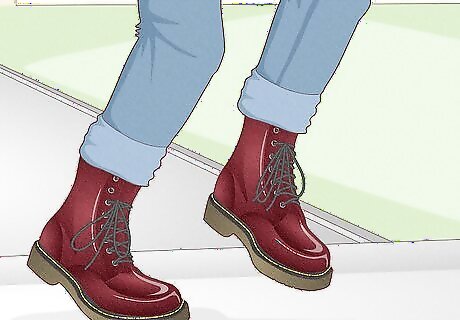
Take your boots on an outing. Once you can comfortably wear your Dr. Martens for an hour, they should be fully broken in. Test the fit on a walk or excursion that allows you to come home and change shoes if necessary. If you’re worried, bring an extra pair of reliable shoes along with you.
Using Ice
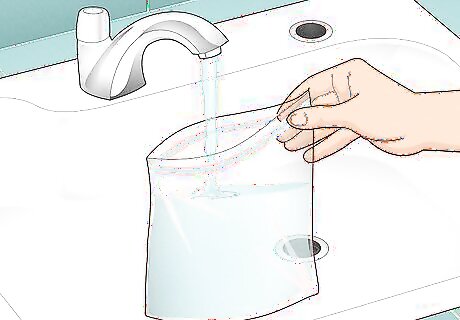
Pour water into a resealable freezer bag. Fill the bag no more than halfway to avoid spills or tears. Be aware of the areas of your boot that need the most stretching, as this may alter how much water you place in the bag. If it’s a smaller or larger portion, fill the bag with the amount of water that makes it fit comfortably within that space. Use a high-quality plastic bag. You don’t want any water to touch the leather directly, as this will damage your boots. Choosing a bag specifically for freezer use will help ensure that no leaking occurs.
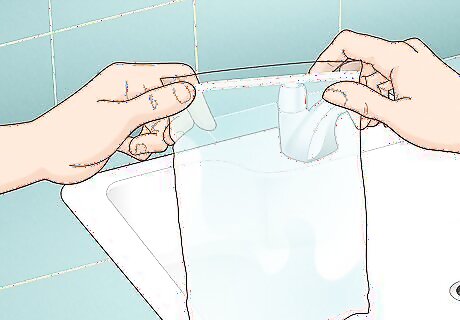
Seal the bag. Leaving only a small corner of the bag unsealed, remove the excess air from the unfilled half of the bag, and then fully seal the bag. Double check for leaks, tears, or an incomplete seal. Just in case you’ve spilled a bit of water while filling or sealing the bag, wipe it off with a dishcloth or paper towel.
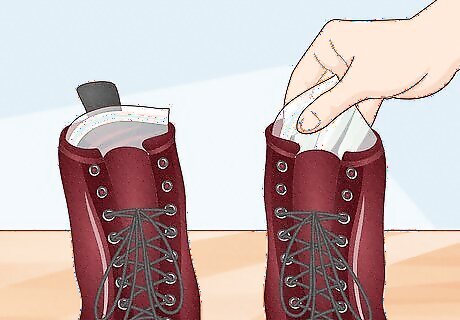
Place the bag in your shoe. Check to make sure that the bag presses against the area(s) of the shoe that need to be stretched. Use crumpled newspaper to keep the bag in position. You can use several bags of varying sizes to fill the various portions of your shoe. The toe, in particular, may call for a smaller bag that fully touches the entire front of the shoe.
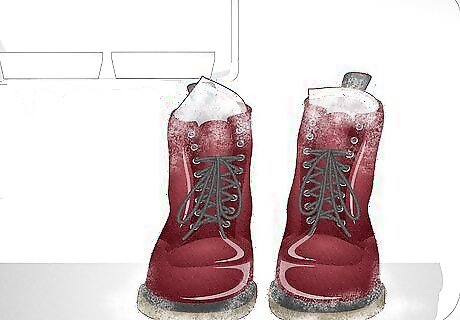
Freeze the boot. Put your boot, complete with the filled bag of water, into your freezer. Leave the boots in the freezer for a minimum of eight hours, or overnight. The water should be completely frozen before you remove the shoes, as the expanding ice is what stretches the leather.
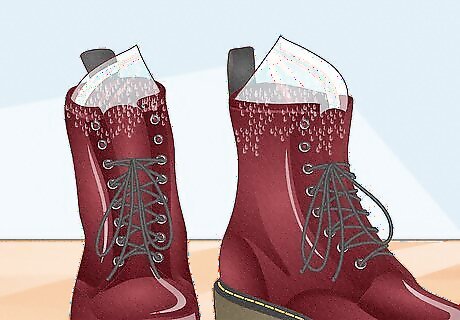
Let the boots thaw. Once you remove your boots from the freezer, wait twenty minutes up to an hour before you remove the bags. The ice needs time to melt and soften a bit so that you’re not forcing the bag out of the shoe. Taking the bag out too early may tear the bag, spilling the water that will damage your boot.
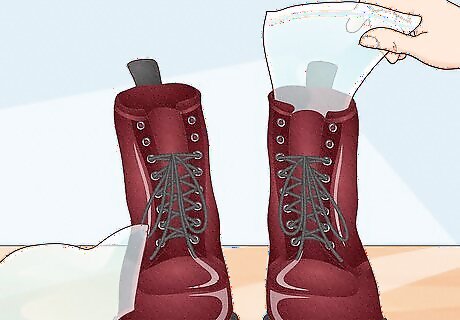
Remove the bag. Be very careful not to tear the bag as you pull it out of your boot.
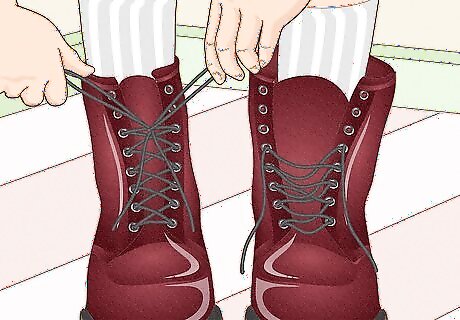
Check the fit. If your boots are still too tight, repeat the process, focusing your attention on the problem areas.
Applying Heat
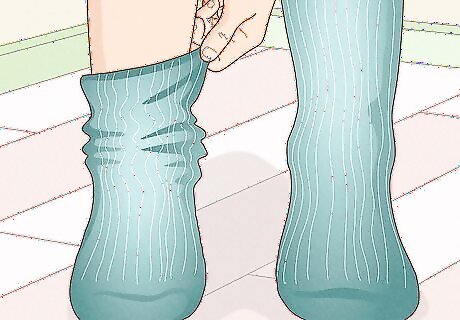
Put on thick socks. You want the boots to feel tight, so use woolen or winter socks.
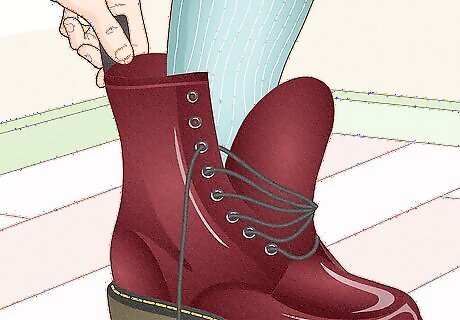
Wear your boots on top of the socks. You may need to force your feet to fit into the boots, and this won't be the most comfortable experience. Without a tight fit, however, the leather won’t have any reason to stretch or expand. If the boots still feel loose, try putting on two or three pairs of socks at once.
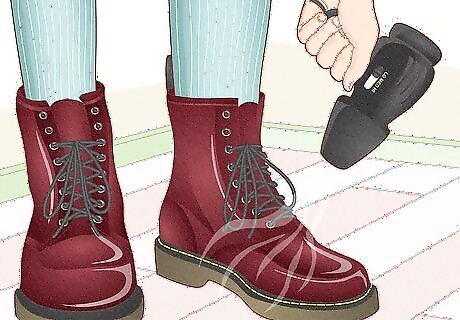
Break out your hair dryer. Keeping the hair dryer about six inches away from the shoe, blow hot air on the tight areas of the boots for about 30 seconds, flexing your feet and wiggling your toes as you go. Each problem spot should receive its own 30-second heat treatment.
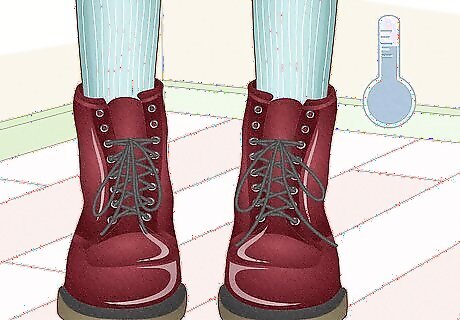
Let the boots cool. Keep wearing your new shoes until they’ve cooled down, walking around and flexing your foot as you wait. The boots should be about room temperature to the touch before you remove them, otherwise you’ll negate the heating process.
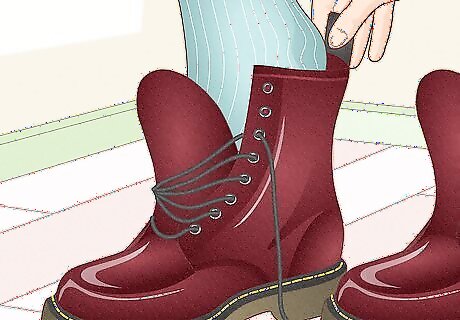
Check the fit. You may need to repeat this method several times, paying close attention to which spots need the most attention. Focus the heat treatment on those areas. Try wearing a thicker pair of socks if you find it necessary to repeat the steps. It’s possible your fit wasn’t tight enough to force the leather to stretch.
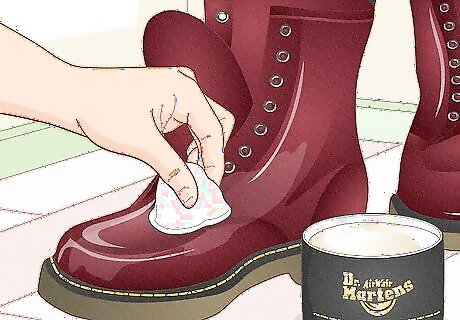
Condition your leather. Heat removes moisture from the leather, which may cause cracks or breaks in the shoes. Avoid this side effect by applying products designed to restore moisture and keep the leather supple, such as Dr. Martens Wonder Balsam.


















Comments
0 comment